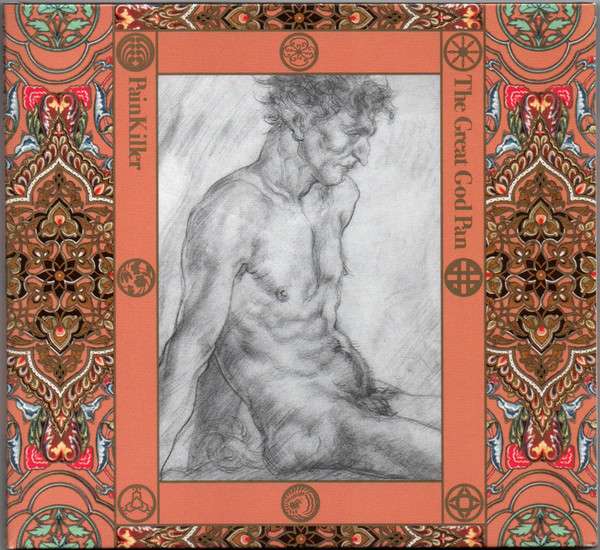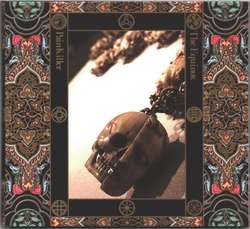Painkiller, the trio of John Zorn, Bill Laswell, and Mick Harris shows no signs of slowing down. The Great God Pan is their third full-length, since their reunion in 2024, and in many ways it is an unexpected offering. In keeping with their interests in the metaphysical realm, Painkiller find inspiration from the famed Arthur Machen horror novella. Here, the ambiance is king, and the dark, arcane atmosphere wraps its claws around you from the start of "Ercildoune."
The 24-minute-long piece is a descent to an abstracted, ambient world. While Painkiller are no strangers to tampering with minimalism, in this instance, they go further than before. Harris's illbient melts awa,y and Laswell's dub machinations are reduced to their basic components. This results in a deeply meditative space, where a strong sense of introspection prevails. However, this is not an easy trip through some stripped-down zen-space, and Painkiller have enough ammunition to make this ride more uncomfortable.
It falls mostly on Zorn to break the mold in The Great God Pan. The sudden saxophone breaks in "Ercildoune" are the first examples of Painkiller's usual, crazed, and frantic demeanour. Their piercing quality floods the sonic field. These moments fully expand into free-jazz frenzy. The start of "Secret Sins" relishes this headspace, where chaos and disorder take hold. It only lasts for 30 seconds, but it is still a potent start, especially as the drums join in. Structure and pacing appear irrelevant in this instance. It is stunning to see how Painkiller manipulate time. At first, it is the slow electronic pacing, keeping things at a glacial level. Then it is the free-jazz anarchy where, once more, time becomes meaningless.
Still, the retreat to the ambient domain is inescapable. While "Ercildoune" keeps things subdued, "Secret Sins" moves toward the active. Here, the sonic design is electrifying as the beats possess an intrinsic energy. It still taps into the same mystical quality of the opening track, but the result is something with a more solid form. In that way, Zorn's performance helps greatly as he moves aptly from destructive moments to moody pieces. I find the track's second half to be particularly immersive, as Zorn performs a kind of random walk through Harris's and Laswell's sonic labyrinths.
Painkiller's extension toward deeper, minimal sounds does not come without its downsides. In the end, the performance appears more one-sided toward Zorn's interests and motifs. Due to the subdued nature of the backdrop, it feels like some of the nuance is missing. The electronica beats are lacking body or a sense of movement, which was key in earlier releases. The dub layers also appear more skeletal, their presence reduced in favour of ambiance.
I keep revisiting the absolute masterpiece that is Execution Ground, and while a direct comparison is pointless, when isolating some of the electronic and more minimal parts, it appears like some sense of wonder is lost. The Great God Pan is still compelling, but it feels uneven. While it is undeniably a Painkiller work, it feels like it does not reach the same depths as their other seminal works. It could also be the result of putting out three albums over the course of a year. Regardless, it is still a compelling work, and I feel like there is more the trio can unearth in this minimal mode.

